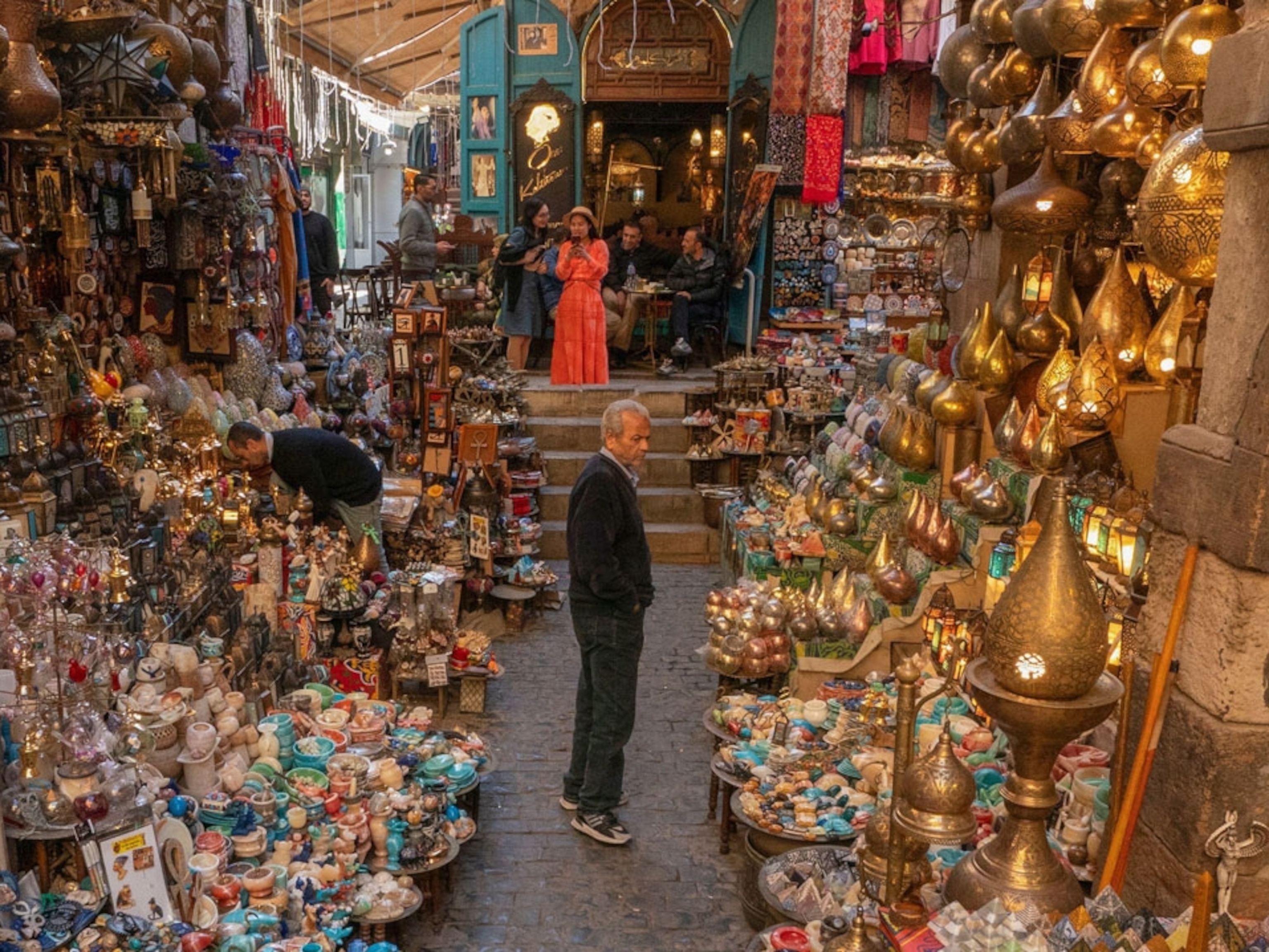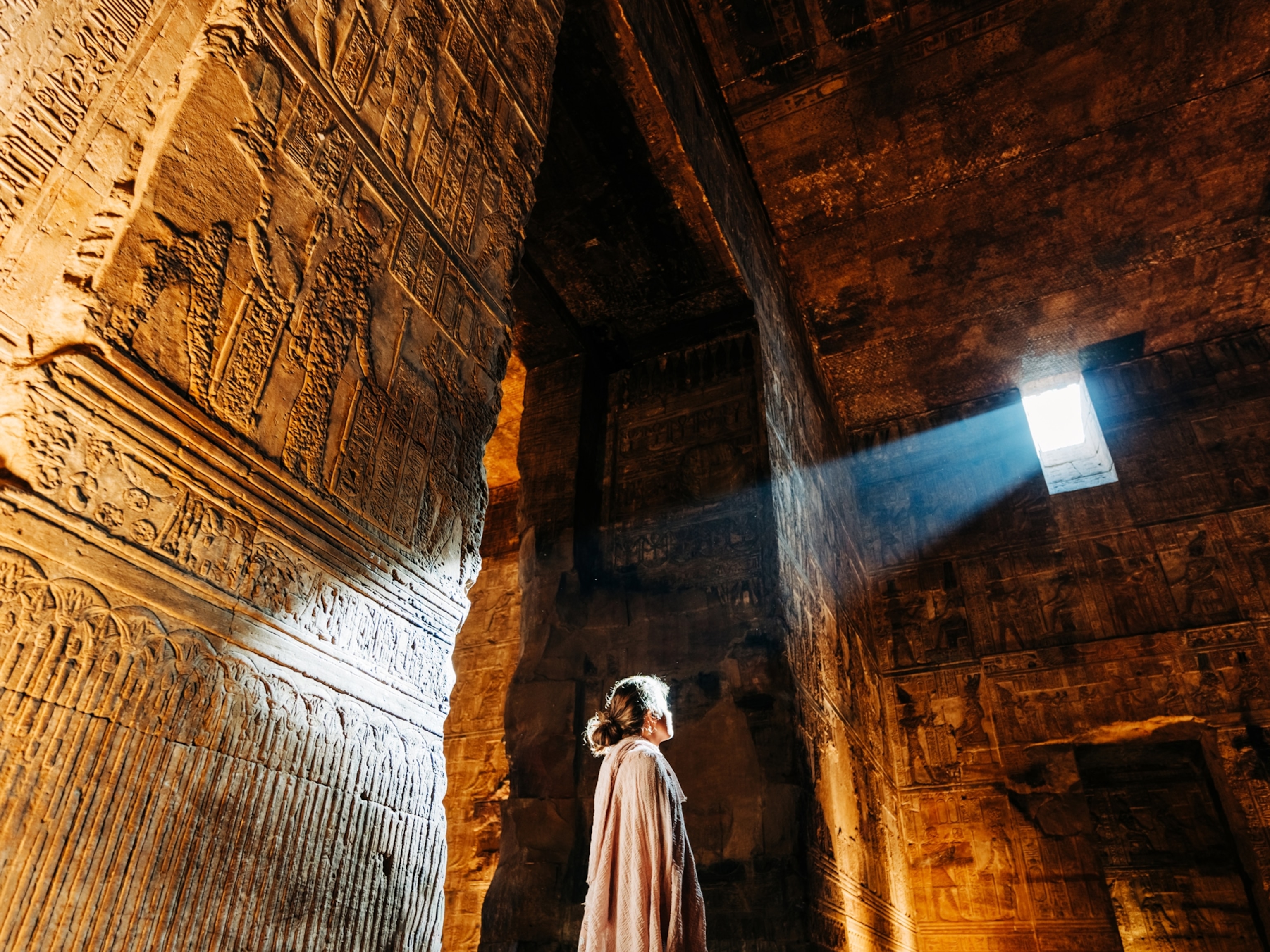
A tantalizing trek into the heart of Sicily
Hike across Italy’s storied southern island on a newly revived ancient pilgrimage route.
According to local legend there’s treasure in the hills of Sicily. A chest of gold is hidden in cave-studded cliffs, and will only be discovered if three men dream simultaneously of its location.
But residents here can’t wait for a dream. Sicilians have taken fortune into their own hands with an ambitious project to boost tourism: creating a new walking route along millennia-old pilgrims’ trails. To many, this effort is far more constructive than bemoaning the island’s infamous history of organized crime or capitalizing on its abandoned rural houses, which sell for one euro apiece as part of a drive to reinvigorate Italy’s underpopulated reaches.

Ten years ago, a group of Italian friends—historians, archaeologists, naturalists among them—began mapping Sicily’s inland routes as described in the Norman texts of crusading knights. Dating back more than a thousand years, these mostly forgotten trails once formed part of the oldest and most popular pilgrim itineraries in Europe: the Via Francigena (“the Frankish route”), which coursed from Canterbury to Rome and southeast to the Holy Lands.
(Are pilgrimages the next post-COVID travel trend?)
The Sicilian section, a 600-mile network of trans-island roads, paths, trading routes, and trazzere (grazing tracks), was used for centuries by everyone from the Greeks to the Romans, Normans, Arabs, Aragonese, and others, each leaving treasures and traces that can still be found today.



A monumental project to revive the route, involving 80 local authorities and six Catholic dioceses, came to fruition in 2017. Along the main artery, the 112-mile Magna Via Francigena—a trail that runs through the island’s north between the coastal cities of Palermo and Agrigento—walkers can collect stamps to fill their pilgrim’s passport at participating venues. In Agrigento’s cathedral, a testimonium (a certificate of completion) awaits triumphant trekkers.
A long walk with nature’s charms
Weather permitting, my friend and I will be among those who complete the pilgrimage from north to south. My passport gets its first stamp high over the Plain of the Albanians, outside Palermo. The ricotta that stars in local cannoli comes from sheep grazed in these arable lands. We pack panini for a picnic and get our passport stamped by the barista, one of numerous pilgrim-welcoming locals at participating venues (bars, chapels, shops, and B&Bs) the length of the Via.
As we climb above Sicily’s breadbasket country, canyons of palm, aloe, and prickly pear cactus look incongruously subtropical among wheat fields and muddy livestock. A detachment of semi-feral dogs defends the few shuttered hamlets we pass, their warning barks undermined by wagging tails.
The Via’s red-and-white striped waymarks, painted onto posts at frequent intervals, encourage us onward along dirt tracks. Clouds roll over the landscape like a pyroclastic flow, followed by the kind of rain that has powerful contempt for waterproof clothing.
(This is what you’ll learn on the ancient migratory routes through Italy.)
Finally finding reception, my phone pings with messages from friends of the Francigena. Along with trip notes, maps, and an offline GPS-enabled app, my tour operator, UTracks, has plugged me into a network of local volunteers. It offers assistance to pilgrims—everything from a hot meal to an affordable bed for the night or, when needed, an emergency support.
“We usually rescue people who’ve overheated,” says Marialicia Pollara, whose four-wheel-drive meets us at the head of a washed-out track. “There’s not a stick of shade en route.” The Via is accessible year-round, and while summer can be broiling, spring—with its profusion of wildflowers—is ideal.



Except when it rains. “This is crazy weather,” says Pollara, motoring us out of the downpour, as the priest at Tagliavia’s chapel takes in a Czech pilgrim whose tent stands no chance tonight. At her guesthouse in Corleone, La Bicicletta Rossa, we’re joined by Pollara’s husband, Carmelo, for a family dinner. Homemade lentil soup and farm-fresh ricotta, drizzled with jade-green olive oil just in from the harvest, is a supper worthy of a waterlogged pilgrimage.
Correcting the record
“The mafia wasn’t born in Corleone—it’s all over Italy,” says Federico Blanda. “I used to hate seeing people here on the trail of Don Corleone, a fictional film character…but I’ve realized we must use the opportunity to tell the real story.” The real story isn’t one of romanticized Godfather feuds, but one of resistance.
CIDMA, Corleone’s anti-mafia museum, explores the criminal organization’s bloody history. Exhibits include gut-punching photos of victims of mafia violence by Letizia Battaglia and am archive of court documents detailing the 474 mafiosi tried during the Maxi Trial from 1986 to 1992.
“Judges, journalists, campaigners: they paid with their lives for their bravery,” says Blanda. CIDMA celebrates these fallen heroes, murdered by the mafia in retaliation. “Back then, we were a population of 10,000; just a handful were mafia. Yet Corleone’s people still live with the stigma.” He smiles. “So, I love it when visitors come looking for a myth and leave talking about Falcone.”
Stacked spectacularly across tabletop mountains and plunging canyons, the town is a stellar stage on which the Magna Via Francigena zigzags mercilessly, passing Catholic churches and monasteries where pointy-hatted brotherhoods gather in spring for Easter celebrations. “It’s another story little known beyond our island,” says Blanda of the region’s Semana Santa processions that challenge Spain’s for pomp and scale, but draw none of the international crowds.



We follow the San Nicolò river as it tumbles from Corleone in a chain of waterfalls that once powered the region’s mills. As small-scale wheat production declined, locals couldn’t turn to the tourism that bolstered the coast because the inner island was more difficult to access.
“People don’t arrive here just passing by,” says Totò Greco, another friend of Francigena. The teetering hilltop town of Prizzi, far from any main road, had no hotels previously, so, like many Via locals, Greco transformed a family house into a hip, hostel-style B&B. He’s also set up an association—Sikanamente, named after the surrounding Sicani hills—to encourage resident youngsters to stay in the area.
At Prizzi’s sizeable archaeology museum, Greco shows off a variety of artifacts including Roman coins and jewelry. Then, we head to Greco’s cantina to sample this season’s wine. Like a growing number of enterprising young locals, Greco is transforming an old masseria (country farm) into a vineyard, learning how to make wine, reviving native grape varieties, and employing local artists to design labels.
A storm explodes again over the Casale Margherita hotel. Here the owner, Carmelo, refuses to let us continue on foot. “The river’s burst its banks,” he says, chasing us in his pickup truck the following morning. “It’s just not safe—I’ll drive you to the next hill.” Carmelo’s organic farm and gourmet hotel is a new investment. “Tell everyone about us,” he yells, as he waves us off on the hair-raising climb to Sutera.
Timeless connections
“Even now, religion is at the center of our town,” says Miri, a local tour guide from Sutera. “Church bells still shape our day.” Three special bells placed at intervals mark the pilgrims’ climb up Monte San Paolino, over an ascent of 157 steps carpeted with fallen pine cones. Locals collect their pinoli (seeds) to mix into a pasta sauce with raisins, a local specialty.
On reaching the bell at the summit—a one-ton gift from the Vatican—I haul a huge rope pulley, thus sounding a bass chime that makes my teeth shake and sends lizards scuttling through the undergrowth.
Our path is blessed, it seems, from here onward. Sunlit trails of chalk and shale line rolling hills towards the sea, now looming on the horizon and making my coast-to-coast pilgrimage finally seem like a visible reality.
“In Sicily, we have many stories of identity and transformation,” says Alessandra Marsala, whom I meet at Caffè Marconi in the little hillside town of Grotte. “Perhaps it’s the influence of Greek legends.”

The old town’s cave dwellings, which once housed shepherds, gave Grotte its name, but its murals now make the place renowned. Over the past five years, a community project to engage local and international artists has transformed the once-abandoned old town into a vast outdoor gallery. One house features a two-story depiction of a snake-woman, recalling the Sicilian legend of La Biddina, a heartbroken girl whose sorrow turned her into a serpent.
In the air is the scent of mpignolata—pastries filled with fried onion and pancetta that traditionally line stomachs on St Martin’s Day (November 11), when the year’s new wines are celebrated. They are also consumed in springtime, and we are quickly invited to a festive lunch, where handmade arancini and fresh cannoli with local ricotta play starring roles.
Feels like home
Wherever the Via has taken us, rain or shine, it feels like a reunion. Carmelo drops us at the trailhead, first jumping a fence to scrump some corbezzolo for us. Gathering a handful of the gemlike fruit of the strawberry tree, he waves heartily at the distant farmer who looks on, mouth agape. “We’re all family here,” he laughs.
I trail a shepherd and his flock downhill to Aragona, where some of the treasures of Sicily’s wealthiest families are found. Here, local count Luigi Naselli was crowned Prince of Aragona by Spain’s King Filippo IV. His castle, completed in the 18th century and featuring frescoes by Flemish painter Guglielmo Borremans, is surrounded by Gothic churches in which ecclesiastical museums shine with decorated ex-votos, Venetian religious robes, and even a bejeweled scrap said to be from the Shroud of Turin.
(Why ‘Gothic’ is more complicated than you might think.)
Yet, away from the coast and its stellar archaeological site, Valley of the Temples, Aragona is overlooked. It’s a fine place for a fortifying plate of spaghetti all’aragonese, laced with the region’s legendary pistachio nuts. The dish is best sampled at Lo Sperdicchio, a family-run restaurant where pilgrims can touch a lucky wine barrel painted with local saints and get their penultimate passport stamp.
In Agrigento, where the Mediterranean Sea shines blue and the Via’s medieval villages feel like a dream, my journey’s end is announced with a locked door. Agrigento’s towering cathedral, where views stretch back to Sutera’s peaks and across to Africa, is shut for renovation.
But as ever, the friends of the Francigena step in. A WhatsApp message pops up, telling me that the cathedral’s pastor, Don Giuseppe Pontillo, will mark my final stamp and sign my testimonium once he’s finished mass in a neighboring church. I ask him if he’s completed the pilgrimage. He gives me a stern look as if to say: you think I have time for that?
“But it is what we all desperately need,” he says. “To make real connections with our world and with each other.”
Francesco Lastrucci is a photographer based in Italy. You can find him on Instagram.
This article is adapted from a story published in the March 2022 issue of National Geographic Traveller (U.K.).






